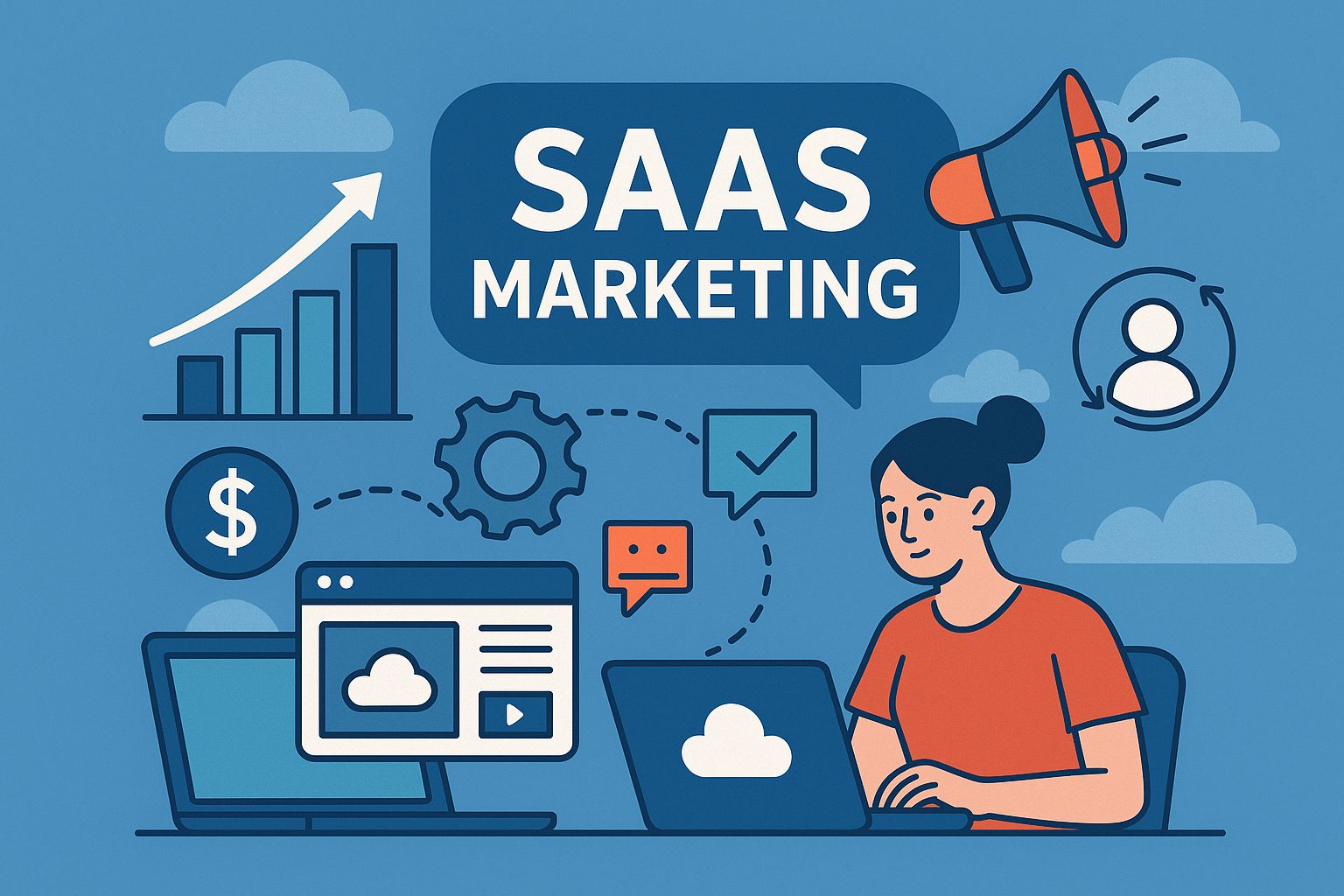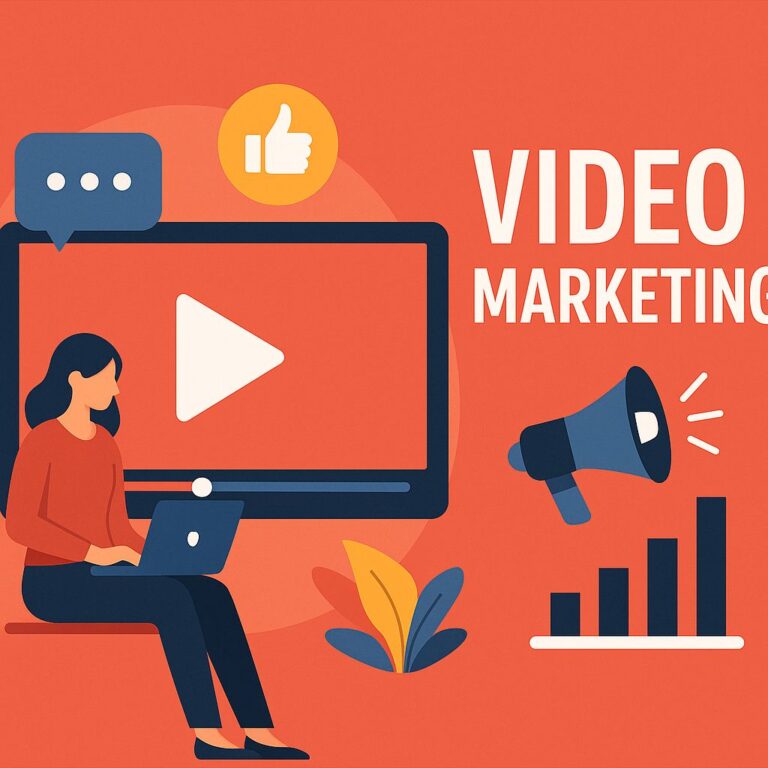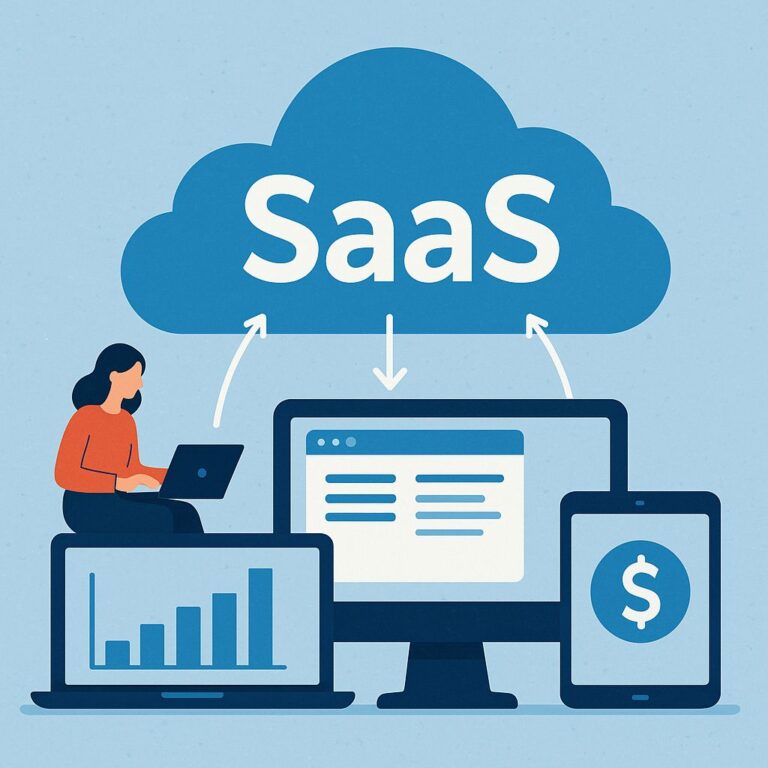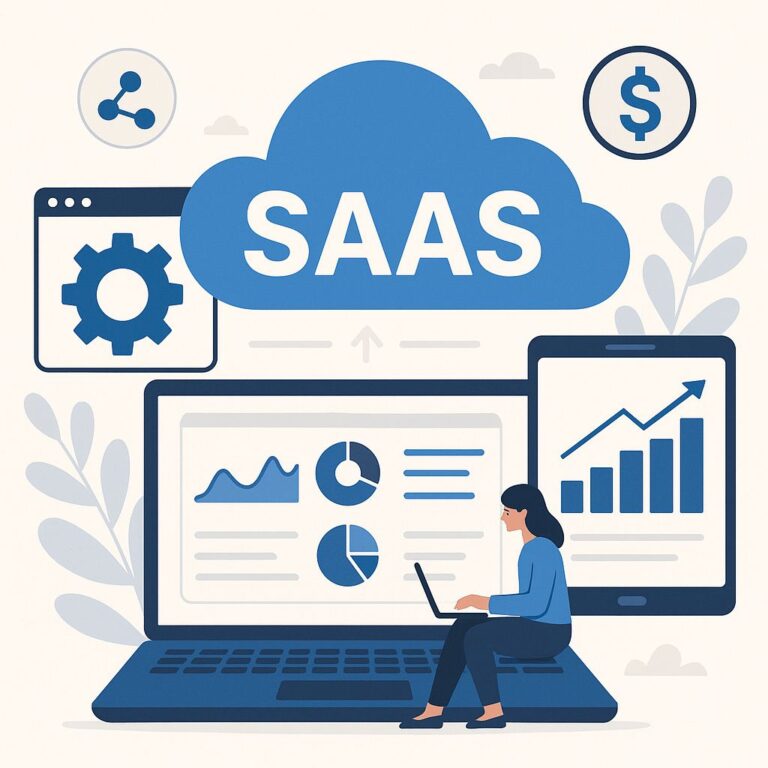Key Takeaways
- SaaS explainer videos can reduce sales cycles by up to 30% by addressing common objections before they arise
- The ideal SaaS explainer video length is 60-90 seconds, with the problem statement appearing within the first 10 seconds
- Companies that use explainer videos on landing pages see conversion rates increase by an average of 20%
- Animated explainers typically cost 40-60% less than live-action alternatives while maintaining similar conversion rates
- Vidyard’s platform helps SaaS companies create, host and analyze high-converting explainer videos that transform prospects into customers
The Hidden ROI of SaaS Explainer Videos
Your SaaS product solves real problems, but your conversion rates aren’t reflecting that reality. The disconnect isn’t your product—it’s how you’re explaining it. SaaS companies incorporating explainer videos into their marketing strategy see 49% faster revenue growth than those who don’t, according to Wyzowl’s Video Marketing Statistics.
The ROI extends far beyond immediate conversions. When Vidyard analyzed the customer journey of over 250 SaaS companies, they discovered that prospects who watched explainer videos spent 88% more time on site and were 64% more likely to book a demo. This translates into qualified leads that already understand your value proposition before your sales team makes first contact.
But not all explainer videos deliver these results. The difference between videos that convert and those that just consume budget lies in understanding the psychology behind how SaaS buyers make decisions. Modern B2B software purchases involve 6-10 decision-makers, each needing to understand complex offerings quickly. An effective explainer video addresses different stakeholder concerns simultaneously, creating alignment that text-based content simply cannot achieve.
“The best SaaS explainer videos don’t just explain products—they compress the decision-making timeline by creating shared understanding across buying committees.” — Tyler Lessard, VP Marketing at Vidyard
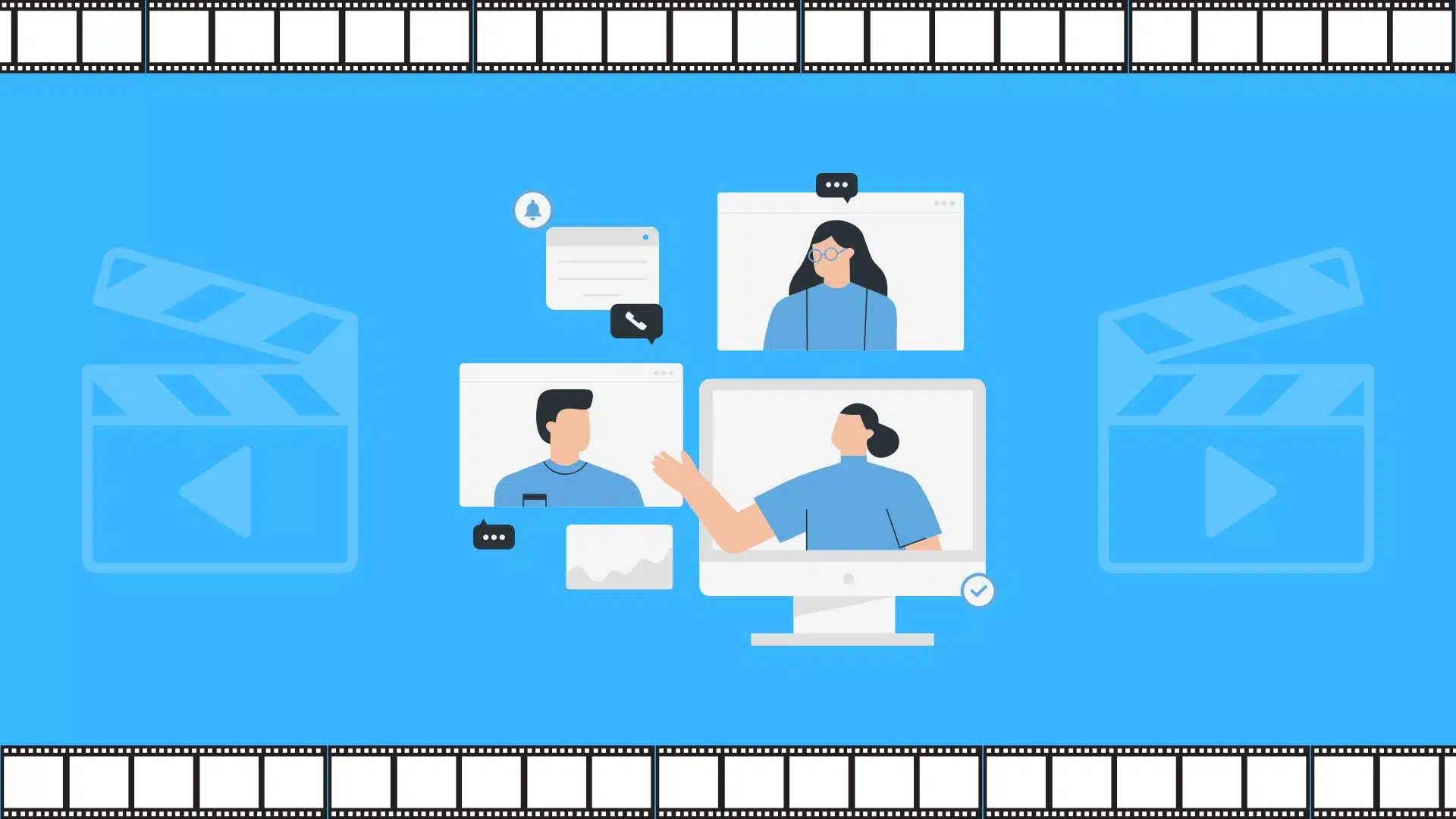
Why SaaS Products Need Visual Storytelling
SaaS products exist in the abstract until someone experiences their benefits. This creates a fundamental challenge: how do you sell something prospects can’t touch, feel, or immediately understand? Traditional marketing collateral often fails because complex features become lost in technical jargon. Visual storytelling bridges this gap by creating a concrete representation of your abstract solution.
The human brain processes visuals 60,000 times faster than text, making explainer videos the perfect medium for communicating complex value propositions. When Dropbox launched their now-famous explainer video, they saw signups increase by 10%, resulting in 10 million new users and $48.2 million in additional revenue—all from a simple 2-minute animation that made cloud storage understandable to mainstream users.
- Explainer videos reduce cognitive load by combining visual and auditory learning pathways
- Visual metaphors help prospects understand abstract concepts through familiar frameworks
- Animated characters create emotional connection that bypasses logical resistance
- Sequential storytelling guides viewers through the problem-solution journey
Complex Features Simplified in 90 Seconds
SaaS products often pack dozens of features into single platforms. This creates a paradox of choice for prospects who struggle to see how these capabilities address their specific challenges. An effective explainer video cuts through feature lists to showcase only the elements that solve the prospect’s most pressing problems. Slack’s explainer doesn’t dive into every integration and customization option—it focuses on how their product eliminates communication chaos. This clarity is why 83% of SaaS companies report that explainer videos help reduce support tickets and onboarding questions.
Emotional Connection That Text Can’t Achieve
While feature lists and benefit bullets have their place, they rarely inspire action. SaaS products exist to solve human problems, and humans make decisions based on emotions first, then justify with logic. Explainer videos excel at creating this emotional bridge by showing real people experiencing the frustrations your product solves. When viewers see their own daily challenges represented on screen, they form an immediate connection that text-based content simply cannot replicate.
Customer testimonials report that explainer videos helped them “see themselves” using the product before they ever signed up for a trial. This visualization process activates mirror neurons in the brain, essentially allowing prospects to mentally test-drive your solution. According to studies by Stanford’s Persuasive Technology Lab, this emotional connection increases purchase intent by up to 85% compared to feature-focused content alone.
24/7 Demo That Never Gets Tired
Your sales team can’t be everywhere at once, but your explainer video can. When properly deployed across your digital ecosystem, these videos function as tireless sales representatives who deliver perfect pitches around the clock. Unlike live demos that vary in quality based on the presenter, explainer videos ensure message consistency while freeing up sales teams to focus on high-touch activities that truly require human interaction.
This efficiency becomes particularly valuable for SaaS companies targeting global markets across multiple time zones. When Asana implemented explainer videos across their site, they saw a 25% increase in demo requests from international prospects who previously weren’t engaging during their local business hours. The ability to understand a product at any time removes a significant barrier to global adoption.
5 Essential Elements of High-Converting SaaS Explainer Videos
Not all explainer videos deliver equal results. After analyzing hundreds of top-performing SaaS videos, clear patterns emerge in the ones that consistently drive conversions. The difference between videos that merely inform and those that transform viewers into customers lies in these five critical elements that speak directly to the psychology of SaaS buying decisions.
1. Clear Problem Statement Within 10 Seconds
You have 10 seconds to convince viewers they’re in the right place. Leading explainer videos immediately validate the prospect’s pain points using specific language that mirrors their internal dialogue. Rather than opening with company history or generic statements, effective videos start with a problem scenario the viewer instantly recognizes. Zendesk’s explainer opens with the line: “Customers want help on their terms—anytime, anywhere, on any device.” This immediate problem recognition creates the “yes, that’s me!” moment that keeps viewers watching.
The problem statement should be specific enough to qualify your ideal customer while broad enough to capture your total addressable market. Avoid the temptation to list every problem you solve. Instead, focus on the primary pain point that motivates initial purchase consideration, knowing you can address secondary benefits later in the video.
2. Your Unique Solution Without Jargon
After establishing the problem, transition quickly to your solution using everyday language that a 12-year-old could understand. This isn’t about dumbing down your message—it’s about making it instantly accessible. Replace industry jargon with concrete explanations that show rather than tell. Instead of claiming your platform “optimizes cross-functional workflow efficiency,” show how it eliminates three specific steps from a common process viewers currently struggle with.
The solution segment should clearly communicate your unique approach without diving into technical details. Focus on what makes your solution different rather than listing features that all competitors share. Monday.com’s explainer stands out by visualizing how their colorful boards transform chaotic workflows into organized systems, highlighting their visual approach as the key differentiator in the project management space.
3. Real-World Application Scenarios
Abstract benefits fail to convert; concrete applications close deals. Top-performing SaaS explainer videos showcase 2-3 specific use cases that demonstrate your solution in action. These scenarios should represent your most common customer journeys, showing the transformation from problem state to resolution. Airtable’s explainer brilliantly demonstrates how different teams use their platform—from marketing campaign planning to product development—without getting lost in feature explanations.
The key is selecting scenarios that resonate with multiple stakeholders in the buying committee. While IT may care about security protocols, marketing wants to see campaign management capabilities. By showcasing diverse applications, your video addresses various decision-maker concerns simultaneously, accelerating the consensus-building process essential for SaaS purchases.
4. Customer Benefit Statements (Not Feature Lists)
The difference between features and benefits is the difference between “what it is” and “what it does for me.” High-converting explainer videos focus relentlessly on the latter. Rather than stating “our platform includes real-time collaboration tools,” effective videos translate this to “you’ll never lose work to version control issues again, saving your team an average of 5 hours weekly.” This benefit-centered approach connects features directly to business outcomes.
The most persuasive benefit statements address three dimensions: individual benefits (how it makes the user’s job easier), team benefits (how it improves departmental performance), and organizational benefits (how it impacts company-wide metrics). This multi-level approach ensures that every stakeholder in the decision process finds personal relevance in your solution.
5. Strong Call-to-Action That Drives Next Steps
Many SaaS explainer videos fail at the final hurdle—they explain wonderfully but forget to convert. Effective videos include a clear, compelling call-to-action that creates urgency and specifies exactly what viewers should do next. Rather than generic “contact us” messaging, high-converting CTAs offer immediate value: “Start your free 14-day trial with full features and no credit card required.”
The strongest CTAs address common objections preemptively. If lengthy setup is a typical concern, your CTA might be “Be up and running in under 5 minutes with our guided onboarding.” This anticipatory approach removes final resistance points just as viewers are most receptive to taking action.

Explainer Video Placement Across the SaaS Sales Funnel
Strategic placement of explainer videos throughout your sales funnel dramatically increases their impact. Different stages require different video approaches, with content tailored to address the specific questions prospects have at each decision point. Companies that deploy multiple video touchpoints report 66% higher conversion rates than those using standalone videos.
Homepage Heroes: First Impression Videos
Your homepage explainer has one job: qualify visitors and guide them to the next step. These videos should be short (60-90 seconds), focus on core value proposition, and appeal to a wide audience while still being specific enough to attract your ideal customer. Homepage videos should answer “What problem do you solve?” and “Why should I care?” without diving into detailed functionality.
When Basecamp redesigned their homepage around a concise explainer, their bounce rate decreased by 25% while time-on-site increased by over 3 minutes. The video provided enough information for visitors to self-qualify without overwhelming them with details better saved for later stages. The optimal placement is above the fold with an enticing thumbnail that suggests the solution rather than asking questions.
Product Pages: Feature-Specific Explainers
As prospects move deeper into consideration, feature-specific explainers address the “how it works” questions that emerge. These 30-60 second videos focus on individual capabilities rather than the entire platform, making complex functionality immediately understandable. Miro uses targeted explainers for each major feature, allowing prospects to investigate specific aspects most relevant to their needs. Learn how Spire Video turns complex SaaS products into simple, sellable stories.
Product page videos should demonstrate concrete applications rather than technical specifications. Show the feature in action solving real problems rather than listing capabilities. This application-focused approach helps prospects envision implementation in their own workflows, accelerating the path from interest to adoption.
Email Sequences: Personalized Video Touchpoints
Nurture sequences with embedded videos generate 300% higher click-through rates than text-only emails. These micro-explainers (15-45 seconds) address specific objections that typically arise during the consideration phase. Each video should focus on a single concern—security, implementation timeline, ROI calculation—providing just enough information to move prospects to the next stage.
The most effective email videos include personalization elements like custom thumbnails showing the prospect’s name or company logo. When Mailchimp implemented personalized video thumbnails in nurture sequences, they saw a 13.5% increase in open rates and 25% higher click-through to their trial signup page. This personalization signals that the content is specifically relevant to the viewer’s situation, not generic marketing material.
From Script to Screen: Creating Videos That Convert
The foundation of every high-performing explainer is a customer-centric script. Before considering visual styles or production approaches, invest time creating a narrative that speaks directly to your prospects’ daily challenges. The most effective scripts follow a proven four-part structure: problem identification, solution introduction, solution demonstration, and clear call-to-action.
Writing Scripts That Speak to Pain Points
Start your scriptwriting process by interviewing customers about their challenges before discovering your solution. Use their exact language in your script—this authentic terminology resonates far more powerfully than marketing-speak. Limit your script to 240 words per minute of final video, focusing on conversational language that sounds natural when spoken aloud.
The most persuasive scripts maintain a consistent 2:1 ratio of benefits to features. For every feature mentioned, include two distinct benefits that connect to measurable business outcomes. Avoid the temptation to explain everything—each additional point reduces retention of your core message. Remember that your goal isn’t to educate completely but to generate enough interest for the next step in your sales process.
Animation Styles That Match Your Brand
Your animation style should reflect your brand personality and target audience expectations. Enterprise security solutions might use sophisticated 3D animation to convey stability and technical sophistication, while creative collaboration tools might leverage playful 2D characters to emphasize accessibility and ease of use. The style itself communicates subtle messages about your company values and approach. For more insights, explore how explainer videos sell your software effectively.
Different animation techniques serve different strategic purposes. Motion graphics excel at visualizing data and abstract concepts, character animation creates emotional connection and storytelling opportunities, and screencast animation demonstrates actual product functionality. Many successful explainers combine these approaches, using character animation for problem scenarios and screencast elements for solution demonstrations.
Voice Selection for Trust and Authority
Voice selection significantly impacts how viewers perceive your brand and solution. The voice artist becomes your brand ambassador, setting the tone for how prospects imagine interacting with your company. Voice demographics should align with your ideal customer profile—if selling to enterprise IT directors, a mature, authoritative voice typically performs better than youthful enthusiasm.
Regional accents influence trust factors in surprising ways. While American accents typically perform well for technical products, British accents often enhance perceived sophistication for premium offerings, and Australian accents can effectively communicate approachability and straightforwardness. Always test voice samples with actual customers before finalizing your selection, as preferences vary significantly across industries and target audiences.
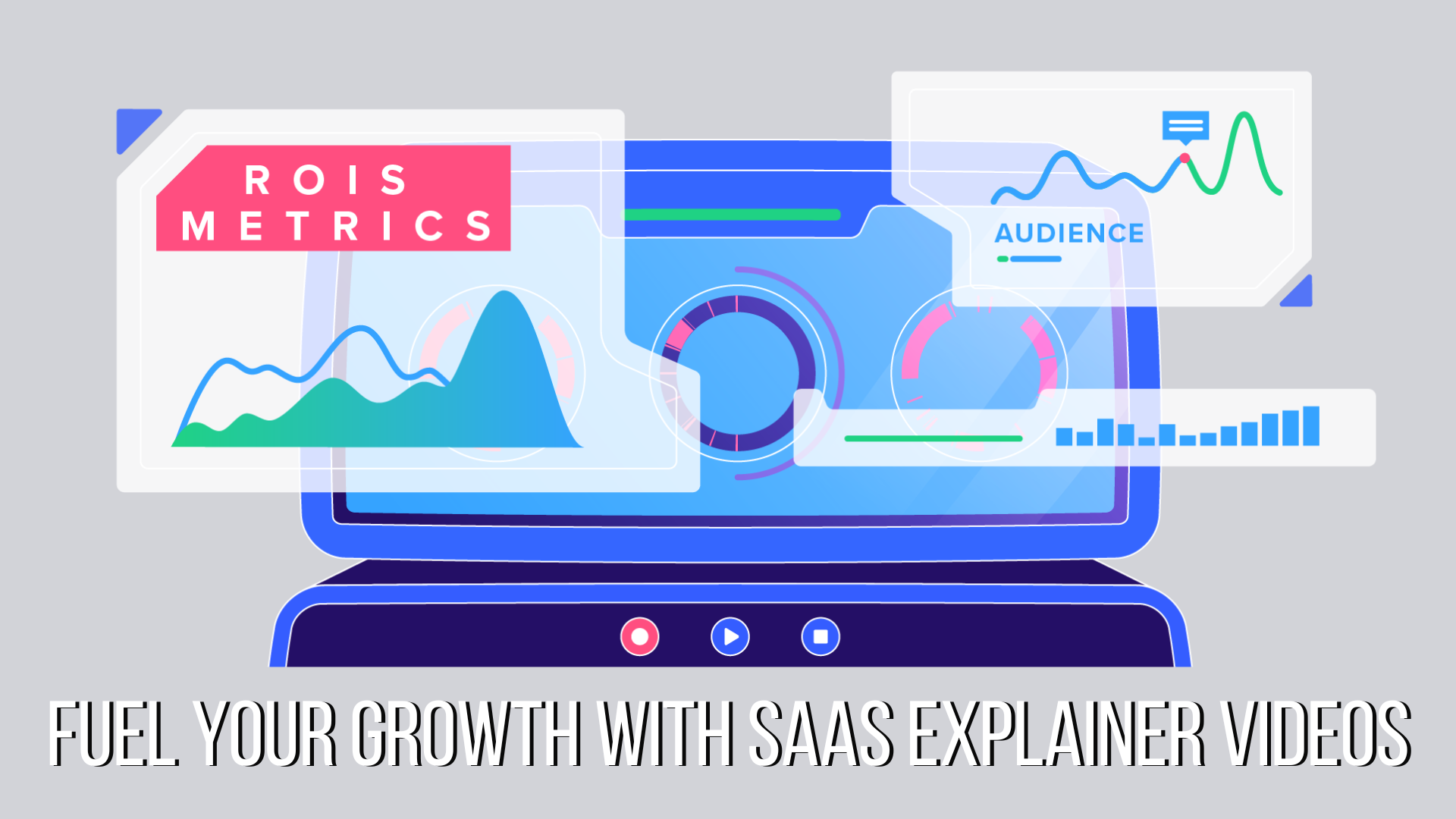
Measuring Explainer Video Performance
The true value of explainer videos emerges through rigorous measurement beyond simple view counts. Implementing the right tracking mechanisms reveals how these videos influence the entire customer journey, from initial awareness through final conversion. Sophisticated SaaS companies track three tiers of metrics: engagement metrics (how people watch), journey metrics (what people do after watching), and business metrics (how watching impacts revenue). For more insights, check out explainer videos that do more than explain.
View-to-Conversion Metrics That Matter
The most revealing metric isn’t total views but completion rate—what percentage of viewers watch to the end where your call-to-action appears. Videos with completion rates below 60% typically have engagement problems in specific sections that can be identified through drop-off analysis. By examining exactly where viewers abandon your video, you can identify messaging problems, pacing issues, or confusing explanations that need refinement.
Track post-view actions to understand how effectively your video drives desired behaviors. Define clear conversion paths (free trial signup, demo request, pricing page visit) and measure how video viewers convert compared to non-viewers. Companies that implement proper attribution often discover their explainer videos influence 30-45% more conversions than previously recognized because many viewers return later through different channels to complete their purchase journey.
A/B Testing Different Video Approaches
Smart SaaS marketers continuously test different video elements to optimize performance. Create variants that test one variable at a time: different opening hooks, varying CTAs, alternative animation styles, or distinct voice artists. By running these tests with statistically significant sample sizes, you can identify which elements most strongly influence your specific audience.
The highest-impact tests often focus on the first 10 seconds and final CTA. When Intercom tested five different opening sequences, they found the version that immediately showed their dashboard in action outperformed problem-statement openings by 38% in completion rate and 24% in trial conversions. This counterintuitive result—challenging the conventional “start with the problem” wisdom—demonstrates why testing is essential for your specific audience and offering. For more insights on creating impactful explainer videos, check out explainer videos that convert.
Heatmap Analysis for Engagement Points
Advanced video platforms provide engagement heatmaps that visually display which sections viewers rewatch, pause, or skip. These heatmaps reveal what information prospects find most valuable or confusing. Sections with high rewatch rates typically contain either compelling benefits worth emphasizing or unclear explanations requiring simplification.
Use these engagement insights to continuously refine your messaging. When Calendly noticed viewers repeatedly rewatching their integration explanation, they created a dedicated follow-up video specifically about integrations that became one of their highest-converting assets. By letting viewer behavior guide content creation, you ensure your video marketing addresses actual prospect information needs rather than assumed ones. To learn more about creating high-converting content, check out Spire Video’s proven formula for explainer videos.
3 SaaS Companies Crushing It With Explainer Videos
Examining successful implementations provides valuable insights into what approaches work in practice. These three companies have leveraged explainer videos that convert to achieve remarkable conversion improvements, each with a distinct strategy worth analyzing.
1. How Slack Explains Collaboration
Slack’s explainer success comes from their brilliant problem framing. Rather than positioning themselves as “team chat software,” their video presents the problem as “scattered communication across too many tools,” then introduces their platform as the solution that brings everything together. This framing elevates the discussion from features to workflow transformation.
The video’s visual style uses simple color-coding to represent different teams and communication channels, making an abstract concept immediately understandable. This visual metaphor carries throughout the video, creating a consistent framework that helps viewers grasp how Slack reorganizes their chaotic communication. The results speak for themselves—after implementing this explainer, Slack saw a 34% increase in trial signups and reported that 73% of users who watched the video before starting a trial reached active user status, compared to 42% of those who didn’t watch.
2. Dropbox’s Simple Visual Problem-Solving
Dropbox’s legendary explainer video remains a masterclass in simplicity. Using hand-drawn animation and conversational narration, they transformed a technical concept (cloud storage) into an immediately relatable scenario of someone forgetting their thumb drive. This everyday problem scenario created instant recognition among viewers who had experienced similar frustrations.
What made this video particularly effective was its focus on emotional benefits rather than technical specifications. Instead of explaining gigabytes or sync technology, the video emphasized the feeling of security knowing your files are always available. This emotional approach helped Dropbox acquire 10 million users from a single explainer video with a relatively modest $50,000 production budget—delivering an estimated ROI of over 1,000% based on customer lifetime value.
3. HubSpot’s Educational Approach
HubSpot’s explainer strategy differs by taking an educational approach that positions them as thought leaders rather than simply vendors. Their videos begin by explaining industry challenges and shifting paradigms before introducing their solution as the natural evolution of marketing technology. This approach builds credibility and trust by demonstrating deep market understanding.
Budget-Friendly Production Options for Startups
Limited marketing budgets shouldn’t prevent you from creating effective explainer videos. The range of available production options has expanded dramatically, with solutions available at virtually every price point. The key is matching your approach to your specific business stage and conversion goals rather than simply choosing the cheapest option.
DIY Tools Worth Considering
For early-stage startups, DIY animation platforms like Vyond, Animaker, and Powtoon offer template-based approaches that can produce professional-looking videos for $500-2,000. These platforms provide pre-designed characters, backgrounds, and transitions that can be customized to match your brand colors and messaging. While lacking the uniqueness of custom animation, these tools create videos that can effectively explain your core value proposition.
Screen recording tools with animation capabilities, like Camtasia and ScreenFlow, enable you to create product demonstrations enhanced with animated callouts and transitions. These tools excel for feature-specific videos deeper in the funnel where seeing the actual product interface becomes increasingly important. Combined with script templates and royalty-free music libraries, even small teams can produce functional explainers that drive conversions. For more insights, explore how explainer videos sell your software.
When to Hire Professionals vs. In-House Creation
The decision to outsource or create in-house should be based on three factors: required quality level, available internal resources, and anticipated longevity of the video. Homepage explainers typically justify professional production because they represent your brand to all website visitors and remain in use for 1-2 years. Feature-specific videos for product pages can often be created internally as they require more frequent updating as your product evolves.
When working with agencies, seek specialists in SaaS explainer videos rather than general video production companies. SaaS-focused producers understand the unique challenges of explaining complex software solutions and the specific conversion goals these videos need to achieve. Expect to invest $5,000-15,000 for professional explainer production, with enterprise-grade productions ranging from $15,000-50,000 depending on animation complexity and video length.
The smartest approach for many growing SaaS companies is a hybrid model. Invest in a professionally-produced core explainer for your homepage, then build internal capabilities to create supporting videos for specific features, use cases, and customer segments. This balanced approach maximizes budget efficiency while ensuring your primary brand touchpoint maintains professional quality. For more insights, explore how Spire Video turns complex SaaS products into simple sellable stories.
- DIY platforms: $500-2,000 per video
- Freelance animators: $2,000-7,000 per video
- Boutique agencies: $5,000-15,000 per video
- Premium agencies: $15,000-50,000 per video
- In-house team startup costs: $10,000-20,000 for equipment, software, and training
The ROI calculation should include not just direct conversion improvements but also sales cycle acceleration, support ticket reduction, and increased customer lifetime value from better-qualified leads. When measured comprehensively, even premium production costs typically deliver positive returns within 3-6 months for actively growing SaaS companies.
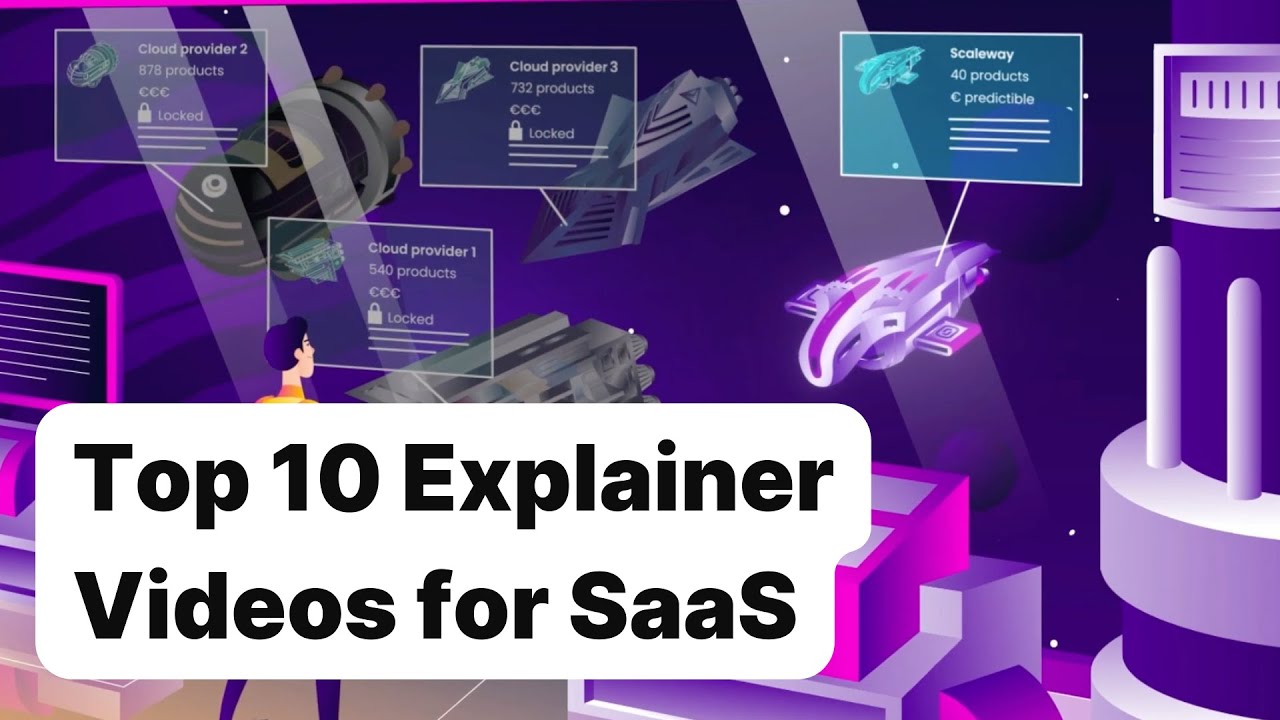
Turn Viewers into Customers Starting Today
The most important step in creating explainer videos that convert is simply getting started. Begin with a clear understanding of your customer’s journey, craft a message that speaks directly to their challenges, and implement proper tracking to measure impact. As you gather data on how prospects engage with your videos, you’ll continuously refine your approach to drive ever-improving results.
Remember that explainer videos aren’t just marketing assets—they’re conversion tools that compress your sales cycle by addressing questions, concerns, and objections before prospects ever speak to your team. By investing in quality video content strategically placed throughout your funnel, you transform passive website visitors into engaged prospects ready to experience how your solution can transform their business.
Frequently Asked Questions
Q: How long should a SaaS explainer video be?
Q: What’s the average cost to produce a professional SaaS explainer video?
Q: Should we use animation or live action for our SaaS product?
Live action becomes more appropriate when human connection is paramount to your value proposition or when demonstrating physical products that integrate with your software. Some companies effectively combine approaches, using live action to establish emotional connection with real users, then transitioning to animation or screen recording to explain functionality.
Q: How many explainer videos do we need across our marketing funnel?
As your program matures, expand to include segment-specific videos tailored to different buyer personas (technical buyer vs. business buyer) and use case videos for specific industries or applications. Companies with comprehensive video strategies typically develop 10-15 videos across their entire customer journey, including post-purchase onboarding and feature announcement videos. For more insights on creating effective video strategies, check out this article on affordable SaaS explainer videos.
Q: Can we measure direct ROI from our explainer videos?
Advanced analytics platforms like Vidyard, Wistia, and HubSpot allow you to pass video engagement data (like percentage watched and engagement hotspots) directly to your CRM, enabling sales teams to tailor conversations based on what prospects have already seen. This integration creates measurable pipeline acceleration, with companies reporting 25-40% shorter sales cycles for prospects who engage with explainer videos before sales contact.
For the most comprehensive analysis, implement unique tracking URLs for each distribution channel of your video, allowing you to identify which placements deliver the highest-quality leads. When measured properly, most SaaS companies find that explainer videos deliver 150-300% ROI within 12 months of implementation, making them one of the highest-returning marketing investments available to growth-focused teams.
Ready to transform your marketing with explainer videos that actually convert? Vidyard’s platform makes it easy to create, host, and analyze high-performing videos that turn viewers into customers at every stage of your funnel.
Explainer videos have become an essential tool for SaaS companies looking to effectively communicate their product’s value proposition. By simplifying complex concepts into easily digestible content, these videos help potential customers quickly understand the benefits of the software. For companies aiming to enhance their marketing strategy, explainer videos that do more than explain can significantly increase conversion rates.

